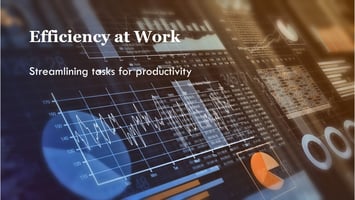In the fast-paced world of third-party logistics (3PLs), Programmable Logic Controllers (PLCs) are...
Can I Wait Until 2026 to Start My AI Journey?
 The Pressure is On in 2025
The Pressure is On in 2025
The logistics landscape is shifting faster than ever. Statista (2024) found that 72% of customers won’t return to a brand after an inaccurate order, underscoring the need for precision. Rising costs, including a 7.8% increase in warehouse rental rates in 2024 (CBRE 2025) and new tariffs like the 25% on Canadian and Mexican imports (NYT 2025), are squeezing margins. New 2025 regulations from OSHA target labor violations, pushing for safer, compliant operations. These pressures demand innovative solutions—now. Waiting until 2026 risks falling behind competitors already leveraging AI.
- Consumer Expectations: 74% are willing to pay for faster delivery, and 40% expect same-day delivery (McKinsey 2023).
- E-commerce Growth: 25% of global retail sales by 2025 (Deloitte 2024).
- Labor Challenges: 55% of transportation workers pivoting industries (LinkedIn 2025).
- Cost Pressures: 7.8% warehouse rental hike, new tariffs impacting margins.
- Regulatory Push: OSHA 2025 standards for safety compliance.
Why AI is a Game-Changer for Logistics
AI isn’t just a buzzword; it’s transforming logistics with measurable results. MIT Sloan (2024) highlights how AI reduces empty truck miles by 20%, a game-changer for efficiency. AIMultiple (2025) cites Amazon’s use of over 200,000 warehouse robots, boosting order fulfillment during peak seasons, and DHL’s drones delivering medicine 60 km in 40 minutes. DHL (2024) predicts generative AI will grow at a 47.5% CAGR through 2030, automating tasks like inventory reports. Inbound Logistics (2025) notes AI’s role in predictive analytics, ensuring smarter supply chains. For 3PLs, AI cuts picking times by 21% and errors by 25% (Robotics Business Review 2024), directly addressing labor and accuracy challenges.
- Efficiency Gains: 20% reduction in empty truck miles (MIT Sloan 2024).
- Automation Impact: 21% faster picking, 25% fewer errors (Robotics Business Review 2024).
- Market Growth: Generative AI at 47.5% CAGR through 2030 (DHL 2024).
- Real-World Examples: Amazon’s 200,000+ robots, DHL’s drone deliveries (AIMultiple 2025).
- Predictive Power: Smarter supply chains via analytics (Inbound Logistics 2025).
The Risks of Waiting Until 2026
Delaying AI adoption could cost you dearly. Precedence Research (2025) projects the AI in logistics market will grow from $26.35 billion in 2025 to $707.75 billion by 2034, with a 44.40% CAGR. North America’s market, led by the U.S. (projected to reach $242.43 billion by 2034), is already accelerating. Competitors adopting AI now will gain a cost and efficiency edge, leaving late adopters scrambling. DHL (2024) emphasizes computer vision’s $17.7 billion market value in 2023, growing at 19.6% CAGR, which could revolutionize warehouse safety—miss that window, and you’re playing catch-up. Gartner (2024) notes blockchain reduces fraud by 30%, a compliance edge you might forfeit by waiting.
- Market Explosion: $26.35B in 2025 to $707.75B by 2034 (Precedence Research 2025).
- Competitive Edge: U.S. market to $242.43B by 2034 (Precedence Research 2025).
- Technology Trends: Computer vision at 19.6% CAGR (DHL 2024).
- Compliance Risk: 30% fraud reduction with blockchain (Gartner 2024).
- Late-Mover Penalty: Lost efficiency and market share.
Start Small, Win Big in 2025
You don’t need to overhaul your operations overnight. Begin with a pilot, like integrating AI for demand forecasting in one warehouse. Salesforce (2024) shows AI reduces stockouts by 20%, a quick win to build momentum. Use IoT sensors to track inventory in real-time, cutting delays by 10% (USDA 2024), as I’ve advised for a client. Additionally, consider Microsoft 365 Copilot for the enterprise, which leverages your local data within the Microsoft 365 platform to enhance efficiency. It integrates with Teams, Outlook, and Excel, offering real-time insights like automated demand analysis or workflow optimization, all while keeping data secure with enterprise data protection. Train your team on AI tools—Ivanti (2024) reports 35% of managers see automation aiding retention by creating new roles. This phased approach minimizes risk while positioning you for growth.
- Pilot Options: AI demand forecasting, IoT inventory tracking.
- Quick Wins: 20% fewer stockouts (Salesforce 2024), 10% less delays (USDA 2024).
- Tech Integration: Microsoft 365 Copilot for real-time insights.
- Workforce Boost: 35% retention improvement with training (Ivanti 2024).
- Scalable Growth: Start small, expand strategically.
The Path Forward
2025 is the year to act. The Sousan Group has guided 3PLs to reduce picking times by 21% and spoilage by 15% using AI and IoT (see our white paper). Waiting until 2026 could mean lost market share and higher costs as competitors surge ahead. Visit www.sousangroup.com to schedule a consultation and start your AI journey today.



